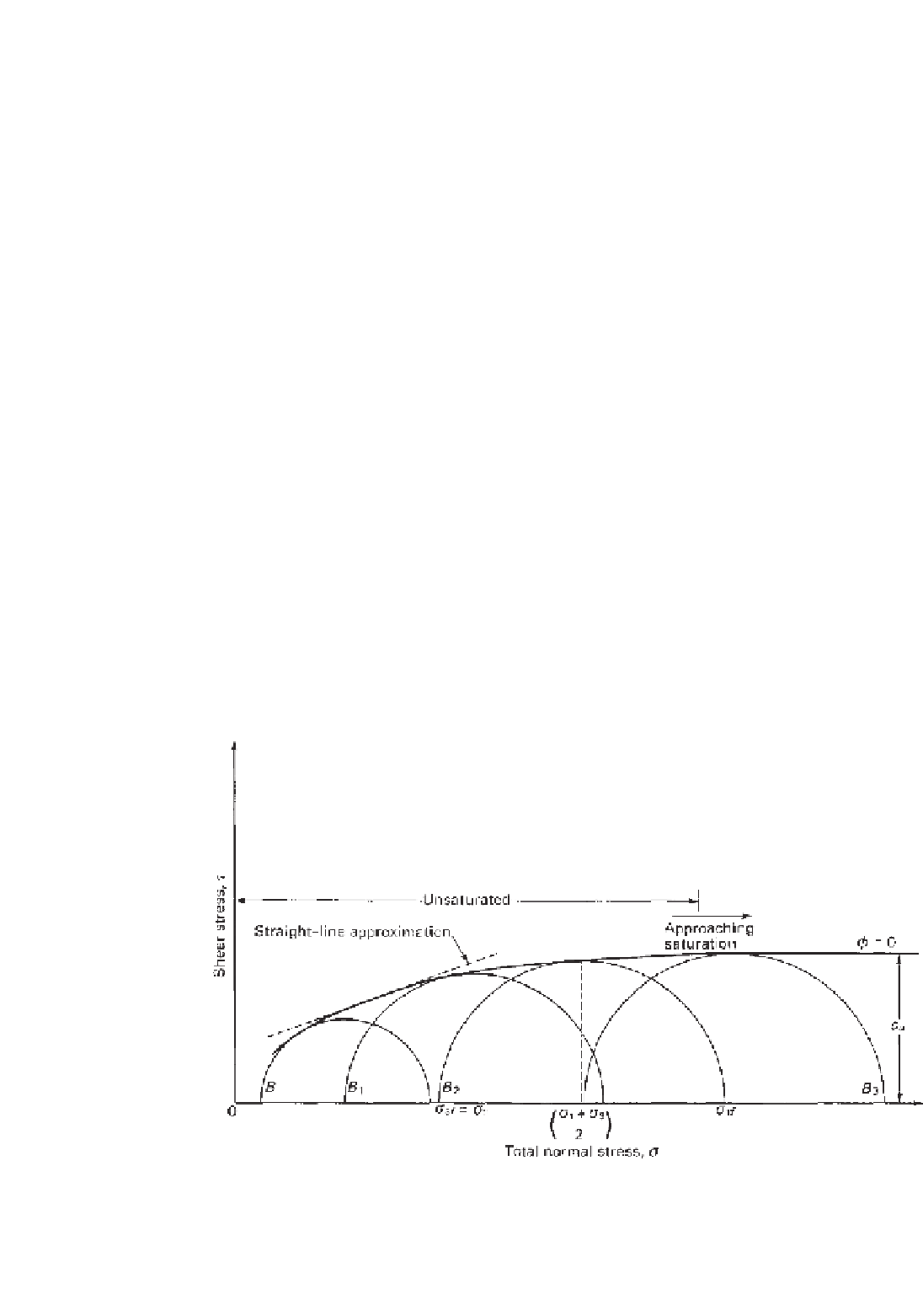Environmental Engineering Reference
In-Depth Information
The increase in shear strength due to the increase in the
initial total confining pressure can also be demonstrated
using a shear stress versus total normal stress plot (i.e.,
τ
versus
σ
plot), as shown in Fig. 11.55. The Mohr circles at
failure are drawn using the total confining pressure at failure
(i.e.,
σ
3
f
undrained tests on saturated soil specimens at various con-
fining pressures result in a series of Mohr circles at failure
with equal diameters. The failure envelope is horizontal
and has a slope of zero (i.e.,
φ
u
=
0; see Fig. 11.55).
The ordinate intercept of the horizontal envelope on the
shear strength axis is half the deviator stress at failure
and is referred to as the undrained shear strength
c
u
.The
application of the undrained shear strength to the analysis
of saturated soil is referred to as the
φ
u
=
=
σ
3
) and the total major principal stress at failure,
σ
1
f
. The diameter of the Mohr circle,
σ
1
−
σ
3
f
, remains
the same when the circle is plotted with respect to either
the net normal stress
σ
u
a
or the total normal stress
σ
.
However, the position of the Mohr circles on the horizontal
axis differs by a magnitude equal to the pore-air pressure
at failure,
u
af
. This behavior can be seen by comparing the
Mohr circle associated with stress point
B
2
in Figs. 11.54
and 11.55.
A typical curved envelope can be drawn tangent to
the Mohr circles for unsaturated soil specimens at failure
(Fig. 11.55). The envelope defines a curved relationship
between shear strength and total normal stress for unsat-
urated soils tested under undrained conditions. The curve
indicates an increase in shear strength as the applied total
stress increases. Care should be taken when interpreting
the meaning of the curvature of the total shear strength
envelope. Matric suction decreases and the degree of
saturation increases as the confining pressure increases.
Eventually, a point is reached where the soil approaches
saturation. In the saturated condition, an increase in the
confining pressure will be equally balanced by a pore-water
pressure increase since the
B
w
pore pressure parameter will
equal 1.0. In other words,
−
0 concept.
The shear strength versus total normal stress relationship
for an unsaturated soil does not produce a horizontal line.
Rather, the undrained shear strength is a function of the
applied total normal stress, as shown in Fig. 11.55.
11.6.5 Unconfined Compression Test
The UC test is a special case of the undrained test. No
confining pressure is applied to the soil specimen throughout
the test (Fig. 11.56). The test can be performed by applying a
deviator stress to a soil specimen in a simple loading frame.
The unsaturated soil specimen has a negative pore-water
pressure at the start of the test and the pore-air pressure
can be assumed to be atmospheric. The soil matric suction
u
a
−
u
w
is therefore numerically equal to the pore-water
pressure.
The soil specimen is sheared by applying an axial load
until failure is reached. The deviator stress
σ
1
−
σ
3
is equal
to the major principal stress
σ
1
since the confining pres-
sure
σ
3
is equal to zero. The compressive load is applied
quickly in order to maintain undrained conditions for the
pore-air and pore-water phases. The pore-air and pore-water
pressures are not measured during compression. The excess
pore pressures developed during an unconfined compression
the effective confining stress
σ
3
−
u
w
remains constant regardless of the total confining
pressure
σ
3
.
The shear strength of the saturated soil should remain
constant
for different
total
confining pressures. The
Figure 11.55
Shear stress versus total normal stress at failure for undrained triaxial tests.








Search WWH ::

Custom Search